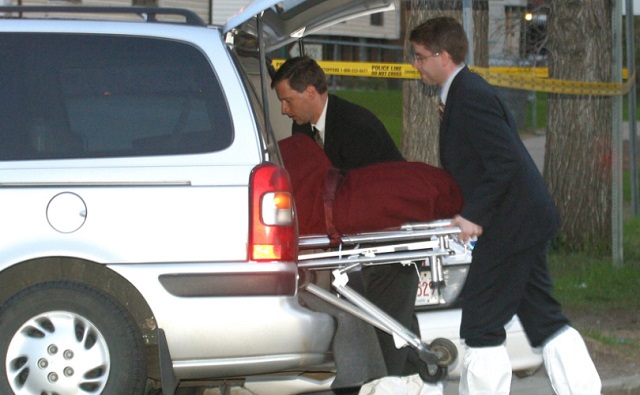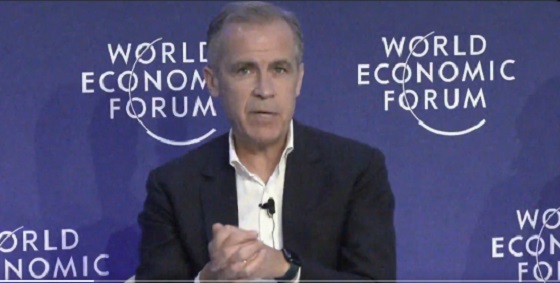Crime
Canada’s justice system struggling to fight crime amid highest murder rate in 30 years: report

From LifeSiteNews
Canada’s murder rate has increased every year from 2018 to 2022, including by 8% from 2021 to 2022, and the police-reported rate for sexual assault is at its highest level since 1995, research indicates.
A well-known Ottawa think tank warned in a recent report on crime that Canada’s justice system is unable to keep up with out-of-control crime that has risen sharply in the last few decades to the point where the national murder rate at its highest in 30 years.
According to the Macdonald-Laurier Institute’s “Report on the Criminal Justice System” released last month, Canada’s violent crime severity is at its highest level since 2007.
“Canada’s criminal justice system is clearly performing worse than it was six years ago,” the report concluded. “There remains a need for ongoing independent monitoring and performance measurement of the criminal justice system in Canada.”
In 2021, the violent crime rate increased by 6%. In 2022, the rate went up another 5%.
According to researchers, Canada’s murder rate has increased “every year” from 2018 to 2022, “including by 8% from 2021 to 2022.”
“The current homicide rate is the highest it has been in 30 years, and the police-reported rate for sexual assault is at its highest level since 1995,” researchers described.
The Institute’s report card on crime in Canada goes through each province and territory, noting that every level of government “bears a portion of the costs of criminality and each level of government therefore has an interest in its suppression.”
Since 2017, when the last report card was released, some provinces have done better and others have gotten worse. For example, Alberta’s overall positive ranking has gone up (less crime) and Ontario’s has gone down (more crime). The provinces with the most violent crime in terms of rates per population were Saskatchewan and Manitoba.
The report found that violent crime in the last five years went up overall, with the “proportion of “Canadians who express confidence in the fairness of the criminal justice system is troublingly low.”
“In 2022, only 62% of Canadians expressed confidence in the police, with only 46% expressing confidence in the justice system more broadly,” the report states.
The report also noted that confidence in “police and the justice system are worryingly low.”
“And no wonder: The combination of plunging clearance rates and an increasing number of cases stayed or gives the perception of a justice system that has given up on its core responsibilities,” according to the report, which also noted that one of the biggest issues “with fairness in Canada’s criminal justice system is the overrepresentation of Indigenous peoples in incarceration.”
“Since 1995, the Criminal Code of Canada has required courts to consider all available sanctions other than imprisonment, especially when it comes to Indigenous offenders.”
It should be noted that Canada’s Supreme Court said in 2012 that lower courts must “must take judicial notice” of the history of “colonialism, displacement, and residential schools” when sentencing Indigenous people.
However, the reality is that Indigenous people jailed for committing crimes is extremely high proportionally in western Canada and Ontario.
When it comes to the overall justice system in Canada, it scored low in terms of efficiency.
“The percentage of cases stayed or withdrawn increased in every single province and territory since 2017, as has the median criminal case length,” the report noted.
Also, crimes have been solved at a lower rate in 2023 compared with previous years, as more cases were stayed or withdrawn.
“Our criminal justice system has unquestionably become less efficient over the last five years despite the introduction of measures designed to enhance the expedient dispensation of justice,” the report states.
“For the most part, the story is not a positive one. On all five of the broad criminal justice objectives, the system is not performing as most would hope, and the situation appears to be deteriorating,” the report concluded.
Crime on the rise in Canada under Trudeau
In 2019, Prime Minister Justin Trudeau’s government passed Bill C-75, which in effect created a “catch and release bail system,” according to pundits and the opposition Conservative Party.
As a result, Canada has seen in recent years a sharp increase in auto thefts from organized crime groups, who have taken advantage of weak sentencing for those caught committing theft.
Conservative Party leader Pierre Poilievre recently blasted Trudeau for the rise in auto theft, blaming his soft stance on criminals.
“After eight years of Justin Trudeau, car thefts are up 300% in Toronto and 100% in Ottawa and Montreal. Nationally, car thefts are up by more than a third since his Liberal government took office,” Poilievre said.
Last week, Poilievre promised that a Conservative government would “go after the real criminals by restoring jail not bail for repeat violent offenders and career car thieves.”
“It’s not the courts that have turned loose criminals and allowed this crime wave, it’s Justin Trudeau. It was not the courts that passed C-75, the catch and release bail system, it was Justin Trudeau. It was not the courts that brought in house arrest for repeat car thieves in C-5, it was Justin Trudeau,” Poilievre said.
Last week, LifeSiteNews reported that Statistics Canada data shows most violent gun crimes in the country last year were not committed at the hands of legal gun owners but by those who obtained the weapons illegally. This comes despite the federal government cracking down on legal gun owners.
Crime against Christian churches has risen sharply in the past two years, with approximately 100 churches to date having been set on fire or vandalized, with almost no arrests made. That fact has prompted Poilievre to call out Trudeau for being silent on the church burnings.
Courageous Discourse
No Exit Wound – EITHER there was a very public “miracle” OR Charlie Kirk’s murder is not as it appears

By John Leake
Turning Point Spokesman: “No Exit Wound a Miracle”
Charlie Kirk Show producer Andrew Kolvet repeats extremely dubious claim purportedly made by “the surgeon who operated on Kirk.”
Monday Blaze Media (relatable with Allie Beth Stuckey) reported the following:
Turning Point USA spokesman and executive producer of the “Charlie Kirk Show” Andrew Kolvet revealed new details about the shooting that even doctors are calling a miracle. According to Kolvet, the surgeon who operated on Kirk claimed that the high-velocity bullet was powerful enough to kill multiple large animals — and “should have gone through” his body. But for some reason, Kirk’s body was able to stop it.
“I want to address some of the discussion about the lack of an exit wound with Charlie,” Kolvet wrote in a post on X.
“The fact that there wasn’t an exit wound is probably another miracle, and I want people to know,” Kolvet continued, explaining that he had spoken with the surgeon who worked on Charlie in the hospital.
“He said the bullet ‘absolutely should have gone through, which is very very normal for a high powered, high velocity round. I’ve seen wounds from this caliber many times and they always just go through everything. This would have taken a moose or two down, an elk, etc,’” he recalled.
“But it didn’t go through. Charlie’s body stopped it,” he added.
When he mentioned to the doctor that there were “dozens of staff, students, and special guests standing directly behind Charlie” when he was shot, the doctor reportedly replied, “It was an absolute miracle that someone else didn’t get killed.”
“His bone was so healthy and the density was so so impressive that he’s like the man of steel,” Kolvet recalls the doctor saying.
This is not a credible statement, and it raises a number of concerns.
It strikes me as very perplexing that a “surgeon operated on Kirk,” because in the video of the shooting, Charlie reacted with a decorticate posture—that is, an abnormal body posture characterized by flexion of the upper limbs—caused by severe trauma to the central nervous system. This indicates that the bullet either directly struck his cervical spinal cord, or the shock wave of the supersonic bullet passing near his spinal cord traumatized it.
A 150-grain, .30-06 bullet’s energy at 150 yards from the muzzle varies by ammunition, but a common hunting cartridge has an estimated value of approximately 1,800-2,000 foot-pounds (with the bullet traveling at about 2500 feet per second). In other words, the .30 caliber (.30 inch diameter) metal projectile struck his neck with sufficient kinetic energy to move a 2,000 pound mass a linear distance of one foot.
If the bullet that struck Charlie’s cervical spinal cord was a .30-06 fired from 150 yards away, it would have:
1). Severed his spinal cord, killing him instantly.
2). Passed through his neck.
Note that the cervical vertebrae are supported by strong muscles and have high compressive strength, but are far too delicate to stop a .30-06 bullet traveling at 2,500 feet per second.
If ALL of the kinetic energy of the bullet was absorbed by Charlie’s neck, it would have done spectacular trauma to his neck, as distinct from producing the clean bullet hole visible in the video footage that ruptured his Carotid artery.
Though I appreciate that some may find a supernatural explanation to be consoling, it seems to me that the investigation should not rest on the this explanation.
As I wrote a few weeks ago: If I were investigating the murder, I would consider the hypothesis that Charlie was shot with a weapon equipped with a suppressor and loaded with a subsonic cartridge to further reduce the sound. I have seen footage of someone firing a rifle with this setup, and the shot was amazingly quiet. The effective range of such a weapon is about 100 yards or less, and the shooter must be very skilled.
However, such a setup could fire a subsonic projectile that would penetrate a human neck without passing through it. In this scenario, the actual assassin (firing the suppressed rifle) hypothetically coordinated the timing of his shot with someone else firing a normal (supersonic and loud) rifle cartridge into the air at the same time to create a distraction or red herring.
In a functioning society in which the people trust their authorities—including their medical examiners—it would be easy to discover what happened and to disclose at least a preliminary report that would satisfy most reasonable people. The trouble our Republic is facing now is that so many of us no longer trust our federal and state authorities to tell us the truth.
For example, we have strong grounds for suspecting that medical examiners are not diligently investigating (with the proper analytic methods) unexpected, fatal cardiac arrests in young people to determine if they were caused by vaccine-induced myocarditis.
Subscribe to FOCAL POINTS (Courageous Discourse).
For the full experience, upgrade your subscription.
Business
Quebecers want feds to focus on illegal gun smuggling not gun confiscation

The Canadian Taxpayers Federation released new Leger polling showing that half of Quebecers say the most effective way to reduce gun crime is to crack down on illegal gun smuggling from the United States, not a federal gun ban and confiscation.
“Law enforcement experts say the best way to make Canada safer is to stop illegal gun smuggling and Quebecers say exactly the same thing,” said Nicolas Gagnon, CTF Quebec Director. “It makes no sense to pour hundreds of millions into a confiscation that only takes guns from lawfully licensed gun owners.”
In 2020, the federal government launched its policy to confiscate thousands of so-called “assault-style” firearms from licensed gun owners. Ottawa recently announced a pilot project in Cape Breton to start taking firearms from individual owners.
The Leger poll asked Quebecers what they think is the most effective way to reduce gun crime. Results of the poll show:
- 51 per cent say introducing tougher measures to stop the illegal smuggling of guns into Canada from the United States
- 37 per cent say banning the sale and ownership of many different makes and models of guns along with a government buyback program
- Six per cent say neither of these options
- Seven per cent do not know
The results of the polls arrived as recorded remarks from Public Safety Minister Gary Anandasangaree made headlines in September.
In a leaked audio recording, the minister suggested the confiscation program is being pushed in part because of voters in Quebec, while also expressing doubt that local police services have the resources to enforce it.
Police organizations have long warned Ottawa’s confiscation program is misguided. The RCMP union says it “diverts extremely important personnel, resources, and funding away from addressing the more immediate and growing threat of criminal use of illegal firearms.”
The program was first estimated to cost $200 million. Just providing compensation for the banned guns, not including administrative costs, could cost up to $756 million, according to the Parliamentary Budget Officer.
Premiers of Alberta and Saskatchewan have both publicly said that they would not cooperate with Ottawa’s gun ban. Premier François Legault has stayed silent on this issue.
“Quebecers have been clear: the real problem is illegal gun smuggling, not law-abiding firearms owners,” said Gagnon. “The police have also made it clear the gun confiscation will waste money that could be used to stop criminals from committing gun crimes.
“Legault needs to stand up for Quebec taxpayers and refuse to help implement Ottawa’s costly and ineffective confiscation scheme. The federal government needs to drop this plan and focus its resources on intercepting illegal guns at the border: that’s how you actually make communities safer.”
-

 Business1 day ago
Business1 day agoQuebecers want feds to focus on illegal gun smuggling not gun confiscation
-

 Energy2 days ago
Energy2 days agoMinus Forty and the Myth of Easy Energy
-

 Uncategorized2 days ago
Uncategorized2 days agoNew report warns WHO health rules erode Canada’s democracy and Charter rights
-

 Crime2 days ago
Crime2 days agoFrance stunned after thieves loot Louvre of Napoleon’s crown jewels
-

 Business1 day ago
Business1 day agoEmission regulations harm Canadians in exchange for no environmental benefit
-

 Courageous Discourse1 day ago
Courageous Discourse1 day agoNo Exit Wound – EITHER there was a very public “miracle” OR Charlie Kirk’s murder is not as it appears
-

 Automotive22 hours ago
Automotive22 hours agoParliament Forces Liberals to Release Stellantis Contracts After $15-Billion Gamble Blows Up In Taxpayer Faces
-

 National1 day ago
National1 day agoPolitically Connected Canadian Weed Sellers Push Back in B.C. Court, Seek Distance from Convicted Heroin Trafficker









